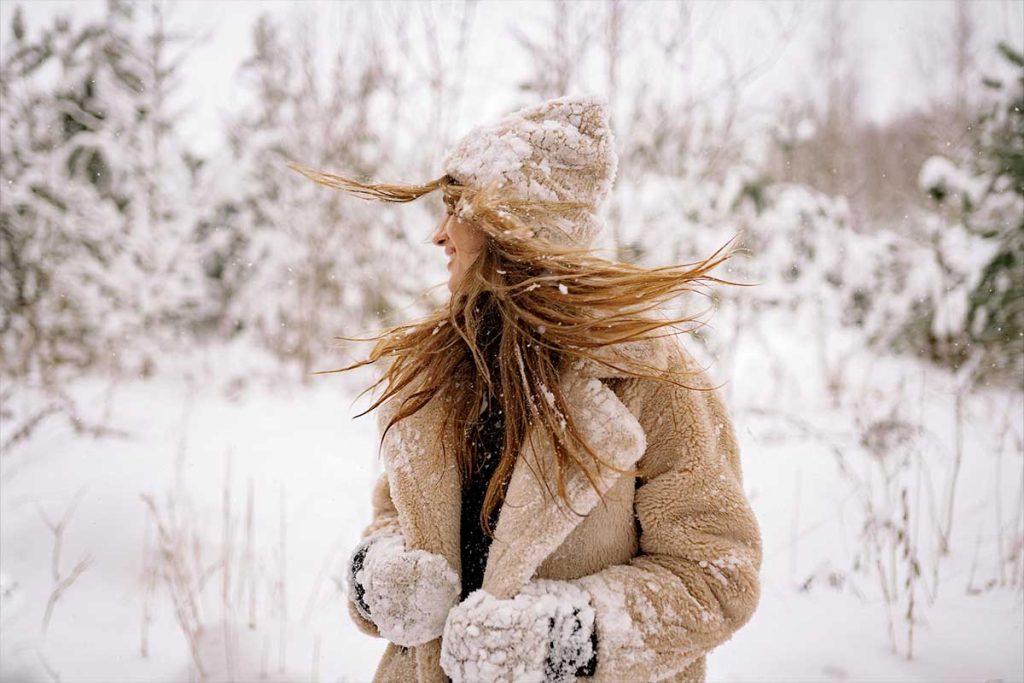
It’s the same feeling every time: “The first ski run of the season is a treat, and the rest don’t fall too far behind,” says Anthony Baker, a winter enthusiast. While some people love what winter in colder states like Vermont and Minnesota bring, there are those who may need a little more persuading …
Winter is fun (really)
Even if you live in a mild-weather coastal paradise, you likely can’t fully escape winter.
While it’s true that humans tend to gravitate more toward hot soups and cozy socks during the cold months, there’s also an undeniable draw toward being outdoors when Mother Nature dresses everything in white.
Deep down, our bodies know that facing the elements can improve physical health and provide a significant mental boost. Think back to being a kid and playing in the snow: it was fun and, oh, that great sleep afterward!
Benefits of winter exercise
Some of us feel less motivated to get outside in cold weather. But the perks are worth it. Exercising in cold weather increases our exposure to natural light, even on overcast days, and can also improve mood and sleep quality. Being active outdoors in colder temperatures can also help improve airway inflammation associated with asthma.
Cardiovascular fitness and immune function are both improved with regular physical activity; that can mean a daily 30-minute brisk walk outside and a couple of strength-training sessions weekly.
Winter exercise is a whole-body affair
Both downhill and cross-country skiing can help improve the markers of chronic conditions associated with aging, and they can serve as part of an aerobic and strength workout routine that also helps improve coordination. “It’s a great feeling,” says Baker, “heading home after a whole day on the mountain, exhausted and energized at the same time.”
Before you head out
Warm up first
As you would for any workout, take a few minutes for a dynamic warm-up so you’ll be ready for the cold―colder temperatures can impact performance and increase the risk of injury.
Layer up wisely
Winter lovers say there are no cold days; there are only wrong clothing choices. Layers are essential, as they maintain warmth around the body, and you can peel some off as needed.
Start with a moisture-wicking base layer that includes either merino; silk; or synthetic fibers, such as nylon or polyester, followed by a thicker insulating layer, and a water and windproof jacket on top. “I usually find good quality and decently priced items at ski-gear swap events, or at various consignment stores in town,” says Baker.
Protect your extremities with lined mittens or gloves, warm socks, and a face mask for blustery, cold days. This is especially important for those who suffer from Raynaud’s phenomenon, when toes and fingers turn pale or blue, get very cold, and hurt upon warming.
Mind the sun, summer to winter
Apply sunscreen on exposed areas, such as the face, especially when you’re up in the alpine (on overcast days, too), and reapply if you sweat. We get a double dose of sunrays since snow reflects sun back, especially on the sun-exposed ski slopes.
We also need to protect our eyes. Being outside in the snow on a bright sunny day can cause photokeratitis, or “snow blinding,” which is painful and can be detrimental in the long run. Make sure to wear proper sunglasses or ski goggles with UV protection. “It’s a bit of an investment, but good-quality goggles protect your eyes and also fog less … ” says Baker.
Feed your body for winter fun
Consume vitamin D -fortified foods regularly to prevent deficiency, or use a supplement, if needed. Include as many fiber-rich, colorful, whole foods in your diet as possible, as they help maintain a healthy gut bacteria population, which in turn optimizes immune function and energy levels.
Beware the hunger gremlins, which are often more active in cold weather. Healthy energy bars and trail mixes can help keep them at bay. Carry a light backpack for your snacks and water bottle, and some electrolytes, too, for a long day in the snow. Be sure your libations are alcohol free; alcohol can impact thermoregulation by causing the blood vessels in the skin to dilate (hence the red cheeks), thus faster heat loss.
An ounce of prevention
Attach ice cleats or spikes to your sneakers or boots, even for walking, when the temperatures cause icy conditions on pavement and the slopes. Falling on ice can cause broken bones, wrists and hips especially, and possibly even spinal and head injuries.
Don’t let the cold get in the way of winter fun. Dress for the weather, fuel accordingly, and give your body the gift of movement and winter-induced happiness (yes, it’s a thing!).
Winter fun with health benefits
Snowtubing, snowshoeing, sledding, and building snow forts are fun family winter activities. Everybody gets their bodies moving, while also enjoying a boost in happiness and social bonding. Hint: don’t forget mugs of hot chocolate to warm up when the activities wrap up.
This article was originally published in the January 2025 issue of delicious living magazine.